Have you ever wondered what the secret is to perfectly cooking wild mushrooms? Well, look no further! In this article, we will explore the best methods to bring out the flavors and textures of these natural delights. Whether you’re a seasoned forager or a curious beginner, we’ve got you covered with tips and tricks that will make your wild mushroom dishes absolutely irresistible. Get ready to elevate your culinary skills and savor the earthy goodness of these extraordinary fungi.
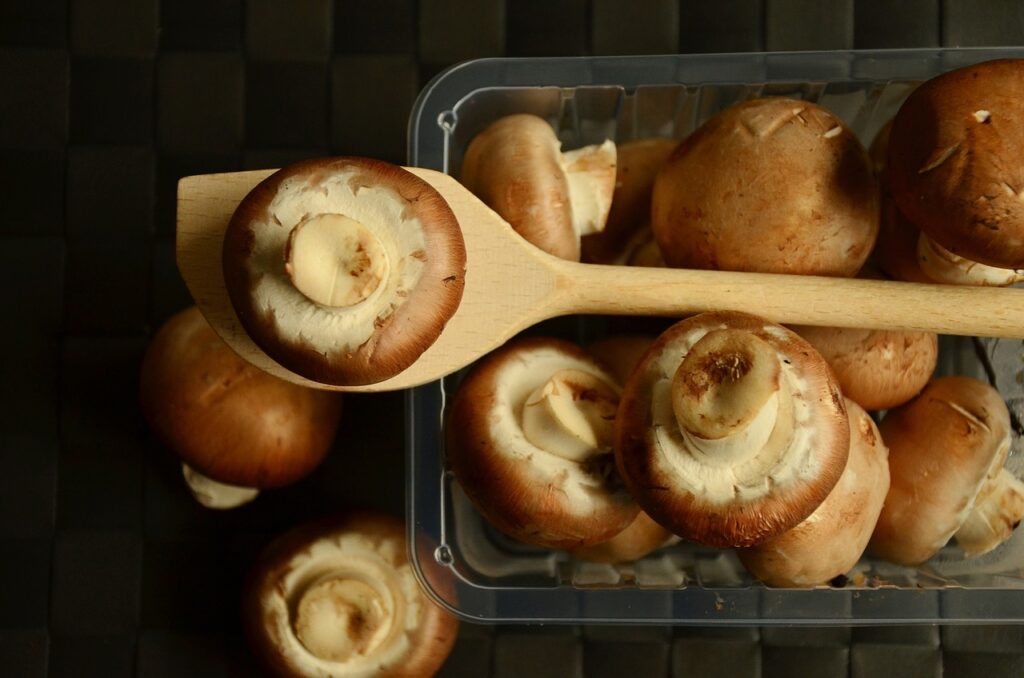
Understanding Wild Mushrooms
When it comes to wild mushrooms, there is so much to learn and discover. Understanding these unique fungi can not only enhance your culinary skills but also open up a world of delicious possibilities. By knowing how to identify different types of wild mushrooms and the safety considerations when foraging, you can safely and confidently explore the world of wild mushrooms.
Identifying Wild Mushrooms
Identifying wild mushrooms is an essential skill for any mushroom enthusiast. There are countless varieties of wild mushrooms, each with their own distinct shapes, sizes, colors, and textures. As you delve into the world of wild mushrooms, it is important to consult reliable field guides or enlist the help of a knowledgeable expert to assist you in identifying the mushrooms correctly. Remember, misidentifying mushrooms can have serious consequences, so take the time to learn the key characteristics and features of the mushrooms you are interested in.
Safety Considerations
When it comes to foraging wild mushrooms, safety is a top priority. While many wild mushrooms are delicious and safe to eat, there are also varieties that can be toxic or even deadly if consumed. It is crucial to be cautious and informed before consuming any wild mushroom. Start by familiarizing yourself with the poisonous mushrooms in your area and avoid them at all costs. If you are unsure about the safety of a particular mushroom, it is always best to err on the side of caution and seek guidance from an expert. Remember, your health and well-being should always come first.
Preparing Wild Mushrooms
Once you have successfully identified and gathered your wild mushrooms, it’s time to prepare them for cooking. Properly cleaning, trimming, and cutting the mushrooms can help enhance their flavors and ensure a delectable end result.
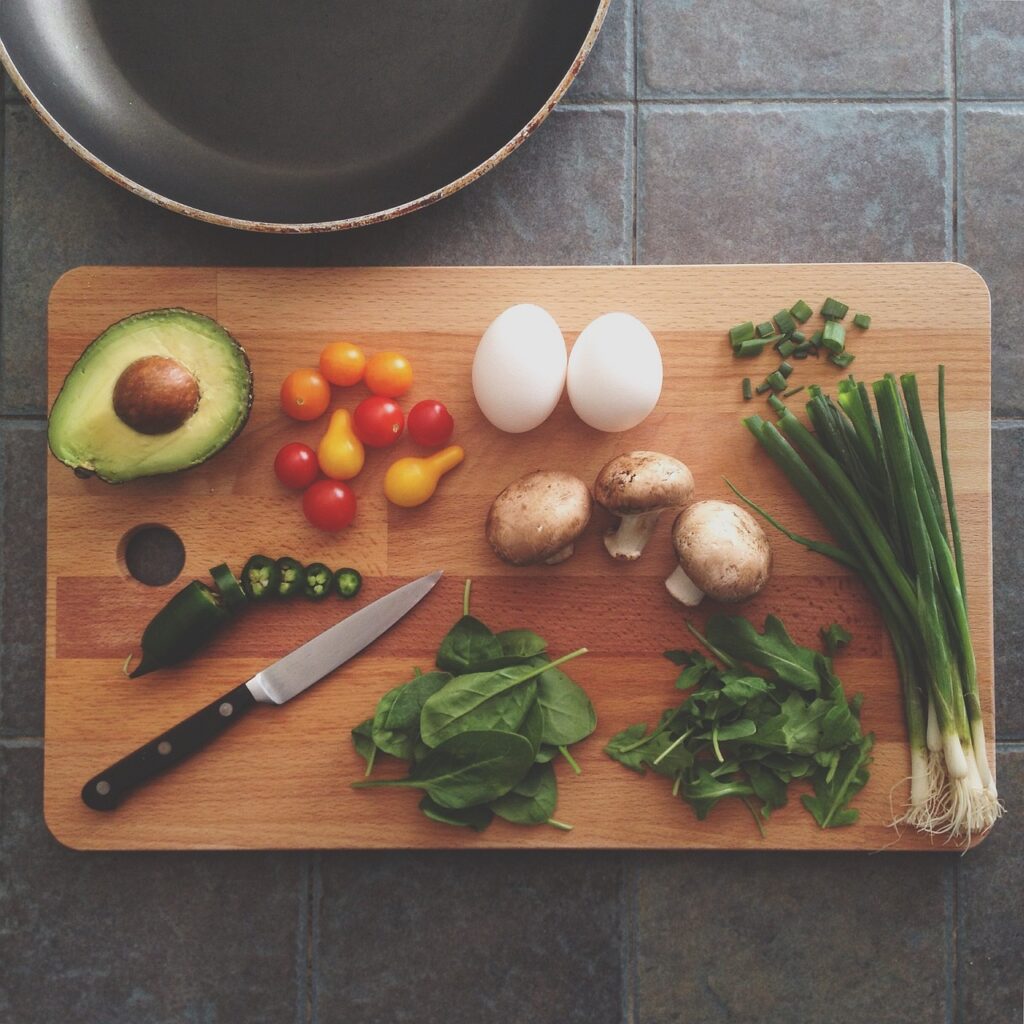
Cleaning Wild Mushrooms
Cleaning wild mushrooms is an important step in preparing them for cooking. Begin by gently brushing off any dirt or debris with a soft brush or a damp cloth. Avoid rinsing mushrooms under water, as they can absorb moisture and become waterlogged, resulting in a less desirable texture and taste. If necessary, lightly dampen a paper towel and wipe the mushrooms clean. Remember to be thorough in removing any dirt or grit, as wild mushrooms often grow in natural environments and may require more attention during the cleaning process.
Trimming and Cutting
After cleaning your wild mushrooms, assess whether any trimming or cutting is required. Some mushrooms may have tough stems or bits that need to be removed before cooking. Use a sharp knife to trim the stems, removing any woody or discolored parts. Additionally, slice or dice the mushrooms according to your desired recipe. Keep in mind that different cooking techniques may call for specific mushroom preparations, so adapt your trimming and cutting methods accordingly.
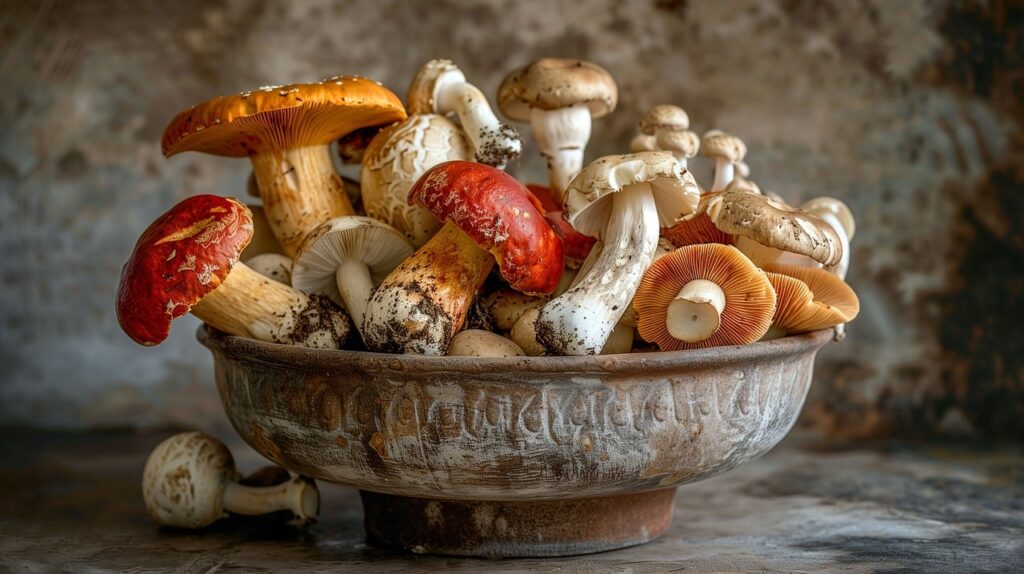
Cooking Techniques for Wild Mushrooms
Now that your wild mushrooms are prepared, it’s time to explore the various cooking techniques that can bring out their unique flavors and textures. From sautéing to baking, each cooking method offers its own distinct characteristics that can elevate the taste of wild mushrooms.
Sautéing
Sautéing wild mushrooms is a popular and versatile cooking technique that highlights their natural flavors while adding a delightful caramelization. Heat a skillet over medium-high heat and add a knob of butter or a drizzle of olive oil. Once the fat is hot, add the mushrooms to the pan and cook them until they are tender and golden brown. Stir occasionally to ensure even cooking and season with salt and pepper to taste. Sautéed wild mushrooms make a fantastic side dish, topping for steaks or burgers, or even a flavorful addition to pasta dishes.
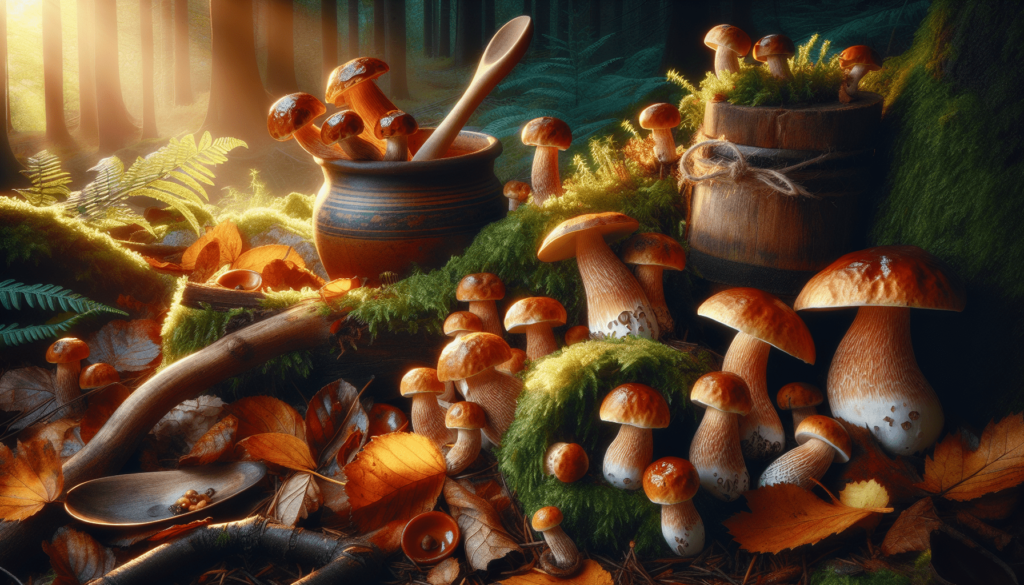
Grilling
Grilling wild mushrooms is an excellent way to impart a smoky and charred flavor while maintaining their natural earthiness. Start by preheating your grill to medium-high heat. Brush the mushroom caps with a mixture of olive oil, garlic, herbs, and spices. Place the mushrooms directly on the grill grates, gill-side down, and cook for a few minutes until they are tender and grill marks start to appear. Flip the mushrooms and continue grilling until fully cooked. Grilled wild mushrooms are perfect as a side dish, in sandwiches, or served on a bed of greens for a delicious salad.
Roasting
Roasting wild mushrooms brings out their rich flavors and intensifies their earthy aroma. Preheat your oven to a high temperature, usually around 400°F (200°C). Toss the cleaned and trimmed mushrooms with olive oil, herbs, and seasonings of your choice. Spread them evenly on a baking sheet and roast in the oven for approximately 20-25 minutes, or until the mushrooms are tender and slightly crispy. Roasted wild mushrooms are a fantastic addition to pasta dishes, risottos, grain bowls, or can even be enjoyed as a standalone dish.
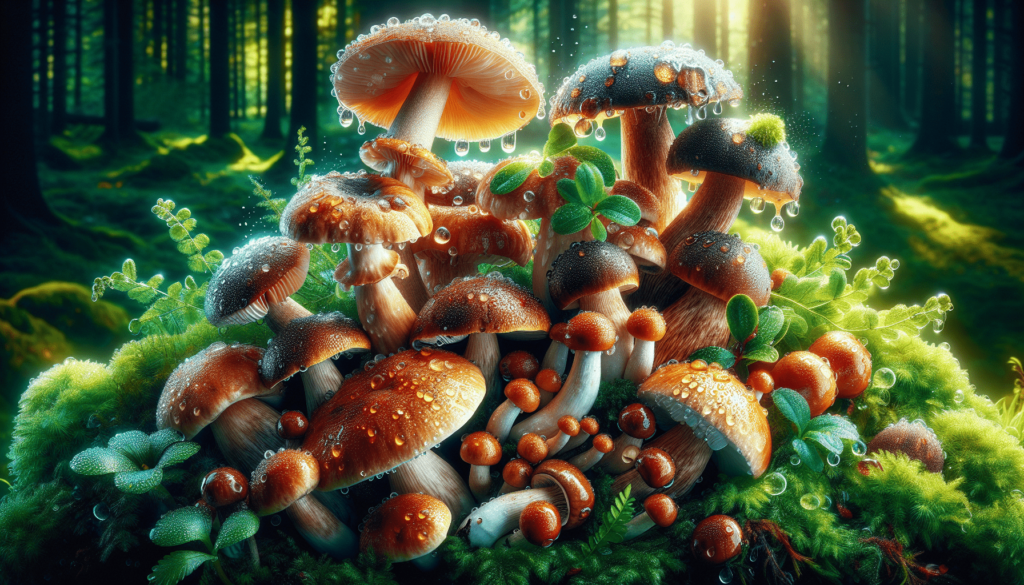
Stir-frying
Stir-frying wild mushrooms allows you to quickly cook them at high heat, preserving their natural flavors and textures. Heat a wok or a large skillet over high heat and add a drizzle of oil. Once the oil is hot, add the mushrooms and stir-fry them for a few minutes until they are tender. You can also add other favorite ingredients such as garlic, ginger, soy sauce, or vegetables to create a flavorful stir-fry. Serve stir-fried wild mushrooms over rice, noodles, or alongside your favorite protein for a delicious and nutritious meal.
Simmering
Simmering wild mushrooms in a flavorful liquid can result in a savory and aromatic dish. Start by sautéing some diced onions and garlic in a saucepan until soft and fragrant. Add the cleaned and sliced mushrooms to the pan and pour in a liquid such as broth, wine, or cream. Bring the mixture to a simmer and let it cook gently until the mushrooms are tender and infused with the flavors of the liquid. Simmered wild mushrooms with their rich broth can be enjoyed on their own, served over rice or pasta, or as a delicious filling for savory pastries.
Baking
Baking wild mushrooms is a unique and delicious way to enjoy their flavors while achieving a tender and juicy texture. Preheat your oven to a moderate temperature, usually around 350°F (180°C). Arrange the cleaned and trimmed mushrooms in a baking dish and drizzle them with olive oil or melted butter. Season with herbs, spices, and a pinch of salt and pepper. Bake in the oven for approximately 15-20 minutes or until the mushrooms are cooked through. Baked wild mushrooms can be served as a side dish, on top of pizzas or flatbreads, or used as a filling for savory tarts.
Enhancing the Flavor of Wild Mushrooms
While wild mushrooms already possess incredible taste profiles, there are several ways to further enhance their flavors. By marinating, seasoning, and using liquid enhancers, you can elevate the taste of wild mushrooms to another level.
Marinating
Marinating wild mushrooms infuses them with additional flavors and adds depth to their natural earthy tones. Create a simple marinade by combining olive oil, vinegar, herbs, garlic, and seasonings of your choice. Toss the cleaned and trimmed mushrooms in the marinade and let them sit for at least 30 minutes, or even overnight in the refrigerator. Marinated wild mushrooms can be used as a topping on salads, in sandwiches, or grilled for an extra burst of flavor.
Seasoning
Seasoning wild mushrooms is a straightforward yet effective way to enhance their taste. Add salt and pepper to taste along with your favorite herbs and spices such as thyme, rosemary, paprika, or chili flakes. Whether you prefer a subtle seasoning or a more robust flavor, experimenting with different combinations can help you find the perfect balance for your wild mushrooms.
Using Liquid Enhancers
Liquid enhancers such as broth, wine, soy sauce, and cream can add depth and complexity to the flavor of wild mushrooms. When sautéing, simmering, or stir-frying mushrooms, consider adding a splash of your preferred liquid to enhance their taste. The liquid will help create a delicious sauce, allowing the mushrooms to absorb the flavors and create a more flavorful overall dish.
Recipes for Cooking Wild Mushrooms
Now that you have a good grasp of the various cooking techniques and flavor-enhancing methods for wild mushrooms, it’s time to put them into practice with some mouthwatering recipes.
Wild Mushroom Risotto
Indulge in the creamy richness of a wild mushroom risotto. Sauté a mixture of chopped wild mushrooms in butter or olive oil until tender. Separately, cook Arborio rice in vegetable or mushroom broth, gradually adding ladles of the broth until the rice reaches a creamy consistency. Stir in the sautéed wild mushrooms, Parmesan cheese, and a drizzle of truffle oil for an added touch of luxury. Serve the risotto hot, topped with a sprinkle of freshly chopped herbs.
Grilled Wild Mushroom Skewers
Enjoy the smoky flavors of grilled wild mushroom skewers. Thread a variety of wild mushroom caps onto skewers, alternating with colorful bell peppers and onion wedges. Brush the skewers with a marinade of olive oil, balsamic vinegar, garlic, and herbs. Grill the skewers over a medium-high heat until the mushrooms are tender and the vegetables have a nice char. Serve the grilled wild mushroom skewers as a delicious appetizer or as a side dish alongside grilled meats.
Roasted Wild Mushroom Salad
Create a vibrant and hearty roasted wild mushroom salad. Preheat your oven and toss a mixture of wild mushrooms with olive oil, garlic, thyme, and a squeeze of lemon juice. Roast the mushrooms until they are caramelized and slightly crispy. While the mushrooms are roasting, prepare a bed of fresh salad greens, such as arugula or mixed greens, and toss them with your favorite vinaigrette. Arrange the roasted wild mushrooms on top of the greens, add some shaved Parmesan or crumbled goat cheese, and finish with a sprinkle of toasted nuts or seeds.
Stir-fried Wild Mushrooms with Garlic
Enjoy the quick and flavorful stir-fried wild mushrooms with garlic. Heat a wok or a skillet over high heat and add a drizzle of oil. Toss in a combination of sliced wild mushrooms and minced garlic, and stir-fry them until tender and slightly golden. Season with soy sauce, a splash of rice vinegar, and a pinch of sugar to balance the flavors. Finish with a sprinkle of chopped green onions and serve the stir-fried wild mushrooms hot over steamed rice or noodles.
Creamy Wild Mushroom Soup
Indulge in a comforting and creamy wild mushroom soup. Sauté a mixture of chopped wild mushrooms, onions, and garlic in butter until softened and fragrant. Add vegetable or chicken broth, herbs such as thyme or rosemary, and simmer until the mushrooms are tender. Blend the soup until smooth, return to the pot, and stir in a generous amount of heavy cream or coconut milk for a luscious texture. Season with salt and pepper to taste and serve the creamy wild mushroom soup hot, garnished with a swirl of cream and a sprinkle of freshly chopped parsley.
Baked Stuffed Wild Mushrooms
Savor the flavors of baked stuffed wild mushrooms. Clean and remove the stems from large mushroom caps, creating a cavity for the filling. In a separate bowl, combine breadcrumbs, grated Parmesan cheese, minced garlic, herbs such as parsley or thyme, and a drizzle of olive oil. Stuff the mushroom caps with the filling mixture, pressing gently to ensure they are tightly packed. Transfer the stuffed mushrooms to a baking dish and bake in the oven until the filling is golden and the mushrooms are tender. Serve the baked stuffed wild mushrooms as an elegant appetizer or as a vegetarian main course.
Pairing Wild Mushrooms with Other Ingredients
Wild mushrooms can be further enhanced when paired with complementary ingredients. By combining herbs and spices, cheeses, meats, and vegetables, you can create harmonious and delicious flavor combinations.
Herbs and Spices
Herbs and spices are excellent companions to wild mushrooms, enhancing their flavors and adding depth to dishes. Experiment with herbs such as thyme, rosemary, sage, and parsley, as well as spices like paprika, chili flakes, and cumin. The earthy aroma of the mushrooms pairs well with these flavors, creating a harmonious blend of tastes.
Cheeses
Cheeses can elevate the richness of wild mushrooms and add a creamy element to dishes. Opt for varieties such as Parmesan, Gruyère, goat cheese, or blue cheese. Whether grated, crumbled, or melted, the addition of cheese can provide a delightful contrast to the earthiness of wild mushrooms.
Meats
Pairing wild mushrooms with meats can create a balanced and flavorful combination. Consider adding cooked bacon or pancetta to sautéed mushrooms for a smoky twist. Wild mushrooms also pair well with poultry such as chicken or turkey, as well as beef or lamb. The meaty texture and umami flavors of the mushrooms complement the meats, resulting in a satisfying and hearty dish.
Vegetables
Combining wild mushrooms with other vegetables can result in a vibrant and nutritious meal. Create a medley of sautéed mushrooms, bell peppers, zucchini, onions, and spinach for a colorful stir-fry. Incorporating roasted wild mushrooms into a vegetable-packed grain bowl or pasta dish can provide a satisfying and well-rounded meal. The possibilities are endless when it comes to pairing wild mushrooms with various vegetables, allowing you to tailor the dish to your preferences.
Serving and Presentation of Wild Mushrooms
The presentation of wild mushrooms can greatly enhance the overall dining experience. By employing various plating techniques, garnishes, and accompaniments, you can transform a simple dish into a feast for both the eyes and the taste buds.
Plating Techniques
When it comes to plating wild mushrooms, simplicity often works best. Allow the natural colors and textures of the mushrooms to shine by arranging them in an appealing manner. Consider using a white or neutral-colored plate as a backdrop to showcase the vibrant hues of the mushrooms. Whether you choose to stack, fan, or scatter the mushrooms, remember to take into account the shape and size of the individual mushrooms to create a visually pleasing arrangement.
Garnishes
Garnishes can add an extra element of visual appeal to your wild mushroom dishes. Sprinkle some freshly chopped herbs, such as parsley or chives, over the mushrooms for a pop of color. Drizzle a high-quality olive oil or a balsamic glaze in an artistic pattern for an elegant touch. Edible flowers or microgreens can also be used as delicate and eye-catching garnishes, enhancing the presentation and adding a touch of sophistication.
Accompaniments
Choosing the right accompaniments can complement the flavors and textures of wild mushrooms. Serve the mushrooms alongside a crusty baguette or artisan bread to soak up the flavorful sauces or juices. A side salad with fresh greens or a citrusy vinaigrette can provide a refreshing contrast to the earthiness of the mushrooms. Additionally, consider pairing wild mushrooms with grains such as rice, quinoa, or barley, for a hearty and nutritious meal. Let your creativity guide you in selecting the perfect accompaniments to accompany your wild mushroom dishes.
Preserving Wild Mushrooms
Preserving wild mushrooms allows you to enjoy their flavors even when they are out of season. Various methods such as drying, freezing, and pickling can help extend the shelf life of these delightful fungi.
Drying
Drying wild mushrooms is an excellent way to preserve their flavors and aromas for future use. Start by cleaning and slicing the mushrooms into thin, even pieces. Place them on a baking sheet or a mesh drying rack in a cool, dry, and well-ventilated area. Allow the mushrooms to air dry for several days until they become crisp and brittle. Store the dried mushrooms in an airtight container, in a cool and dark place. When ready to use, rehydrate the dried mushrooms by soaking them in warm water or broth until they become plump and tender.
Freezing
Freezing wild mushrooms is another effective method of preservation that maintains their flavors and textures. Begin by cleaning and trimming the mushrooms, removing any unwanted parts. Slice or dice them to your desired size. Blanch the mushrooms in boiling water for a brief period, usually 1-2 minutes. Quickly cool them in an ice bath to halt the cooking process. Dry the mushrooms thoroughly and pack them into airtight freezer bags or containers. Label and date the containers before placing them in the freezer. Frozen wild mushrooms can be used directly in cooked dishes without the need for thawing.
Pickling
Pickling wild mushrooms is a unique way to preserve them while infusing them with tangy and acidic flavors. Start by cleaning and trimming the mushrooms, ensuring they are free from debris. In a saucepan, combine equal parts vinegar and water, along with spices such as mustard seeds, peppercorns, and bay leaves. Bring the mixture to a simmer and add the mushrooms. Let the mushrooms cook gently until they are slightly tender. Transfer the mushrooms along with the pickling liquid into sterilized jars, ensuring they are completely submerged in the liquid. Seal the jars tightly and store them in a cool, dark place. Allow the pickled mushrooms to marinate for a few weeks before enjoying their unique flavors.
Exploring Regional Wild Mushroom Dishes
Wild mushrooms are celebrated in various culinary traditions around the world. Let’s take a journey through different regional dishes that showcase the diverse and delicious ways they are prepared and enjoyed.
Matsutake Gohan from Japan
Matsutake Gohan is a beloved Japanese dish that highlights the exquisite flavor and aroma of matsutake mushrooms. This fragrant rice dish is prepared by combining freshly harvested matsutake mushrooms with high-quality rice, dashi (a Japanese stock), soy sauce, and a hint of sake. The ingredients are cooked together to create a flavorful and aromatic rice dish that perfectly showcases the delicate flavor of these prized mushrooms.
Pierogi with Mushroom Filling from Poland
Pierogi, a staple in Polish cuisine, are delicate dumplings that can be filled with an array of ingredients. One popular filling is a mixture of sautéed wild mushrooms, onions, and herbs. The mushrooms are seasoned with salt, pepper, and a touch of butter, then combined with the onions and herbs for a flavorful filling. The pierogi are then boiled until cooked through and can be served with sour cream or garnished with crispy fried onions.
Chanterelle Toast from Sweden
Chanterelle Toast, known as “Kantarellmacka” in Swedish, is a simple yet delicious open-faced sandwich that showcases the delicate flavors of chanterelle mushrooms. Sautéed chanterelles are seasoned with salt and pepper, then placed atop a slice of toasted bread. The dish is typically finished with a dollop of sour cream and a sprinkle of fresh herbs such as dill or parsley. Chanterelle Toast is a perfect way to savor the natural flavors of these prized mushrooms.
Morel Mushroom Sauce from France
Morel Mushroom Sauce, or “Sauce aux Morilles” in French, is a luxurious sauce that beautifully complements various dishes. Sautéed morel mushrooms are combined with shallots, garlic, butter, and a splash of white wine. The sauce is then simmered until thickened and finished with a touch of cream. This rich and earthy sauce is often served alongside grilled or roasted meats, pasta dishes, or used as a decadent topping for steak or poultry.
Porcini Pasta from Italy
Porcini Pasta is a classic Italian dish that celebrates the intense flavors of porcini mushrooms. Sliced porcini mushrooms are sautéed with garlic, olive oil, and herbs such as thyme or rosemary. The cooked mushrooms are then tossed with freshly cooked pasta, creating a dish that is simple yet bursting with umami-rich flavors. Finish the dish with a sprinkle of grated Parmesan cheese and a drizzle of high-quality olive oil for a truly Italian culinary experience.
Conclusion
Exploring the world of wild mushrooms offers a captivating journey through flavors, textures, and culinary traditions. By understanding how to identify and safely forage wild mushrooms, as well as exploring various cooking techniques, enhancing flavors, and preserving methods, you can embark on a delightful culinary adventure. Whether you’re enjoying a comforting wild mushroom soup, savoring a grilled wild mushroom skewer, or indulging in the delicate flavors of regional dishes from around the world, experimenting with wild mushrooms will undoubtedly spark your creativity and leave you with a newfound appreciation for these remarkable fungi. So, go ahead, embrace the excitement, and discover your personal cooking preferences as you explore the wonderful world of wild mushrooms. Happy foraging and cooking!


No Responses